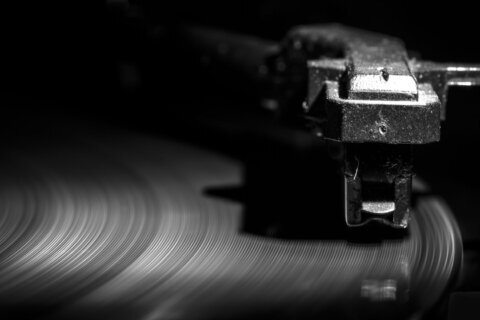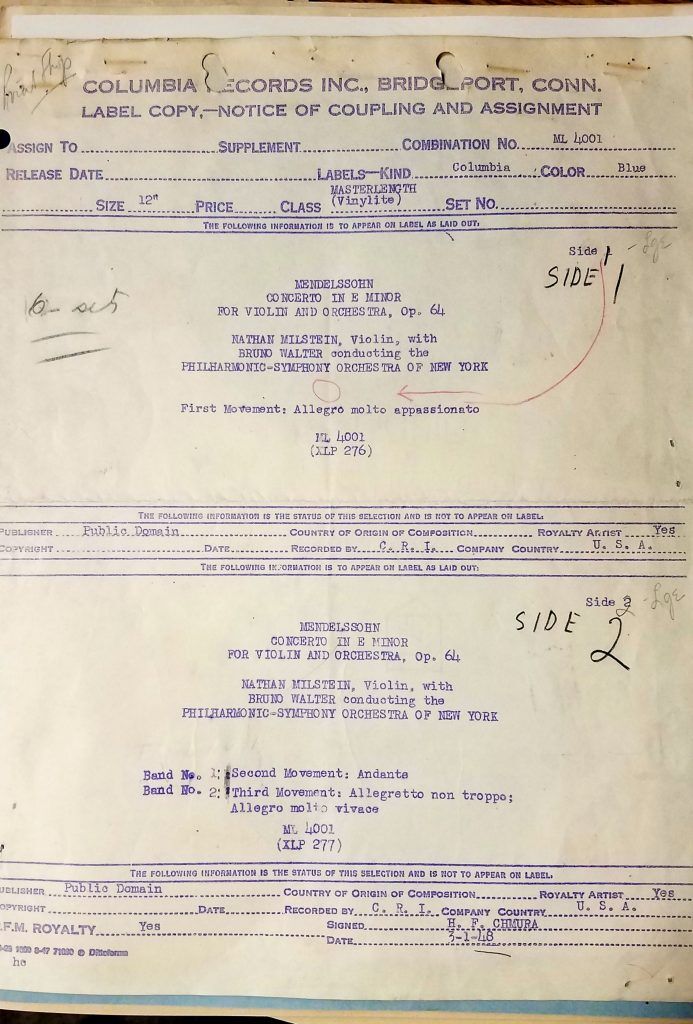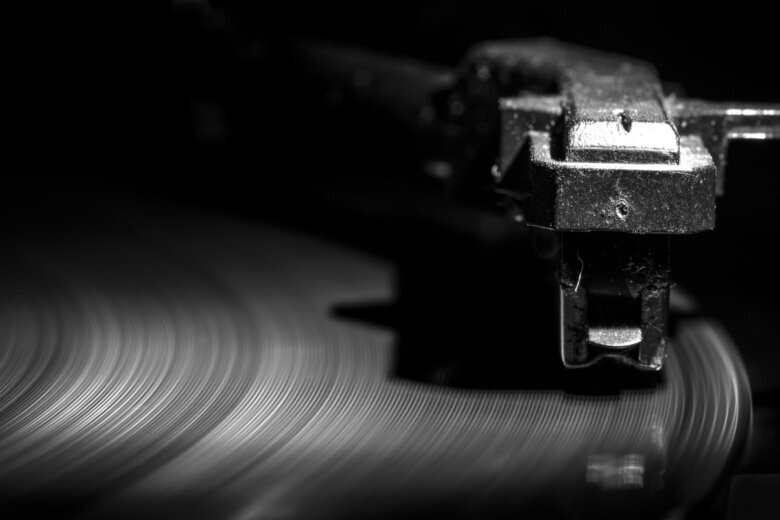
For many, a 12-inch platter of vinyl, spinning 33 1/3 revolutions per minute, exemplifies how they first listened to music.
But long before rock and roll, soul, and other popular music styles were recorded on “albums,” the first vinyl LP — short for long-playing — record was released, 75 years ago Wednesday.
On June 21, 1948, Columbia Records released the first long-playing microgroove record, capable of holding 23 minutes of music per side. Columbia’s president Edward Wallerstein announced the new technology at a news conference at the Waldorf Astoria Hotel in New York City.

According to label paperwork in the Library of Congress, the first vinyl disc featured the Philharmonic-Symphony Orchestra of New York, later known as the New York Philharmonic, under the baton of Bruno Walter, performing Mendelssohn’s “Violin Concerto in E minor,” with Nathan Milstein as the soloist.
The vinyl LP was an attempt to improve upon the limitations of 78 rpm discs, which measured 10 inches, and were made of a more brittle shellac.
Peter Goldmark, an engineer at CBS Laboratories, holds the patent in the U.S. Patent and Trademark Office for the Long-Playing (LP) Record.
Goldmark didn’t apply for a patent until 1956 — eight years after developing the microgroove, and changing the disc material — which were used in Columbia’s first LP.
According to the Library of Congress: “The introduction of the long-playing disc changed the way record labels, musicians, and consumers packaged, created, and listened to music. When Columbia first began manufacturing LPs, the term ‘album’ referred literally to a collection of discs contained together in a group of bound sleeves.”
Beyond allowing listeners to hear an entire symphonic work without having to turn over a record, the vinyl LP became a new unit of consumption.
“Bands and musicians began to conceive and record full LPs rather than singles, and the music on these new albums was often unified around a common theme, musical concept, or narrative —enter the ‘concept album,’” according to the Library of Congress.









